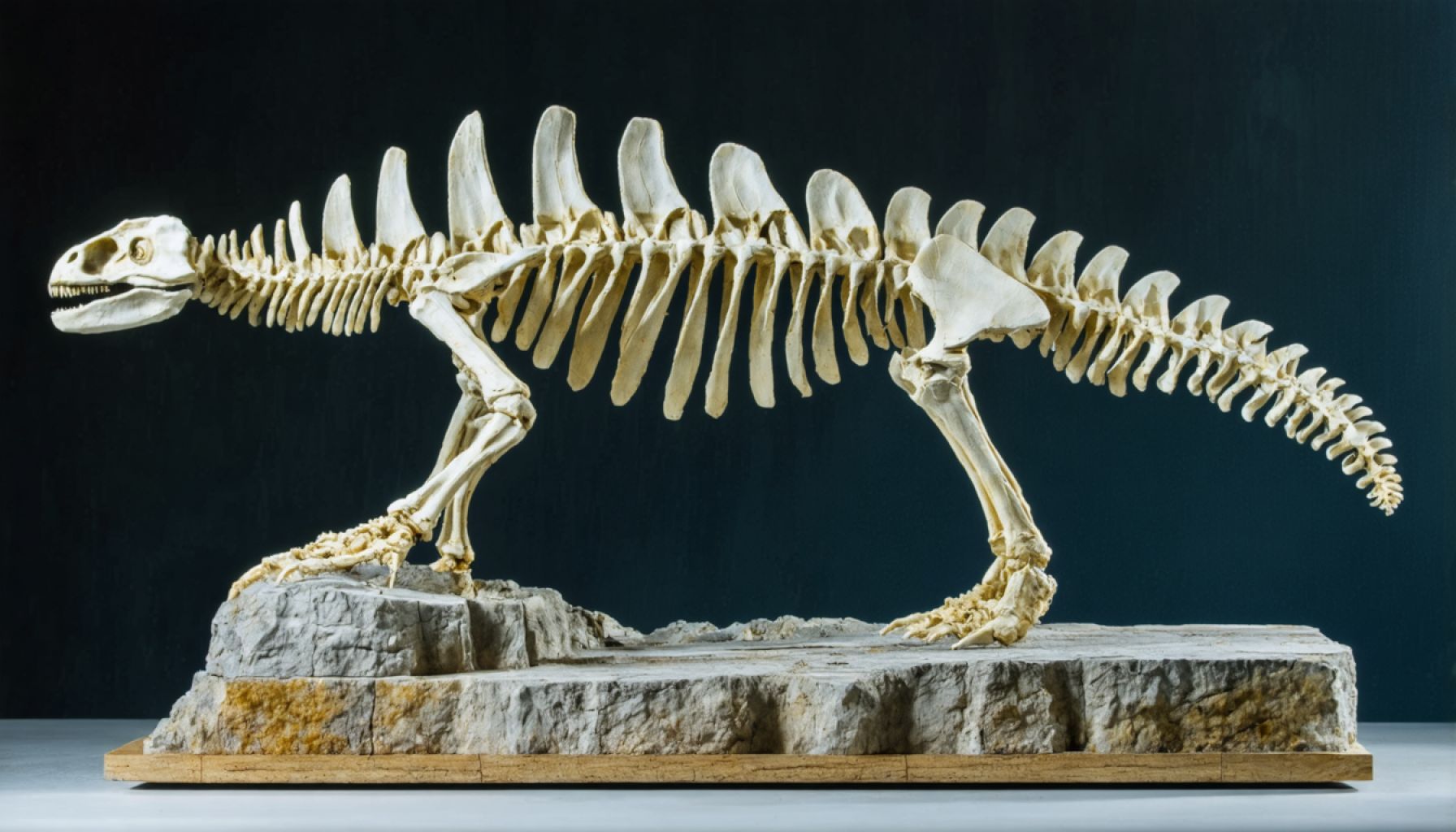- Prototaxites, an ancient organism found in 400-million-year-old swamp ecosystems, defies current scientific classification.
- Originally thought to be the ‘first conifer,’ Prototaxites sparked debate due to its uncertain categorization and monumental size.
- Paleontologists like Francis Hueber proposed a fungal identity, noting similarities to Ascomycota fungi, yet this idea faced skepticism.
- Recent University of Edinburgh research challenges the fungal theory, finding no match with known fungi, plants, algae, or lichens.
- Prototaxites may represent an undiscovered, extinct group of eukaryotes, prompting reevaluation of evolutionary history.
- The enigmatic organism highlights the uncertainties in understanding Earth’s evolutionary past and the complexity of life’s diversity.
- Ongoing research aims to solve the mystery of Prototaxites or acknowledge it as a unique evolutionary anomaly.
In the mists of Earth’s primordial past, towering structures that defy current scientific classification loom in the fossil record. Found in ancient swamp ecosystems dating back 400 million years, these giant organisms, named Prototaxites, once stretched to 8 meters tall and have baffled researchers since their unearthing over a century and a half ago.
Beneath the dense canopy of horsetails and ferns during the late Silurian period, these branchless monoliths stood like sentinels in a foreign landscape. Originally thought to be the remains of trees by geologist John William Dawson in the 1850s, Prototaxites was dubbed the ‘first conifer’. However, the enigma of its true nature has persisted, with numerous studies unable to pin it down to any known category on the tree of life.
In a groundbreaking revelation around the turn of the century, paleontologist Francis Hueber confidently proposed that these mysterious fossils were the remnants of a colossal fungus. This notion gained traction with later studies, such as the 2017 analysis that found structural similarities to today’s Ascomycota fungi. Yet, not everyone embraced this view, and discord persisted among scientists.
Recent research led by the University of Edinburgh challenges the accepted fungal identity of Prototaxites. Their detailed study, which includes microscopic and chemical examination, systematically ruled out all extant groups. The interconnecting anatomy and unique chemical composition did not align with fungi, plants, algae, or even lichens, leaving scientists shaking their heads in wonder.
The scrutinizing eyes of science have left Prototaxites standing alone, a relic of a possibly undiscovered, entirely extinct group of eukaryotes. The specter of this towering organism questions our understanding of evolutionary history, serving as a stark reminder that our planet’s past is filled with profound mysteries we have yet to unravel.
As scientists continue to dissect this enigma, Prototaxites remains a tantalizing reminder of the experimental nature of evolution, a saga where nature’s triumphs are outnumbered by its many failed trials. This saga underscores the singularity and complexity of life, inviting us to peer deeper into Earth’s distant past and to continually question what we think we understand about life’s diversity. As this research progresses, there’s an anticipation that this puzzling organism may eventually find its rightful place on the sprawling tree of life, or continue to stand as a grand evolutionary anomaly.
Mystery of Prototaxites: The Ancient Giants Reshaping Earth’s Evolutionary History
Unveiling the Origins of Prototaxites
Prototaxites, colossal structures from Earth’s primordial swamp ecosystems, challenge our understanding of early life forms. These enigmatic organisms, dating back around 400 million years, towered up to 8 meters tall. For over a century, researchers have been mystified by their nature. Initially thought to be ancient trees, the 20th-century insight shifted towards them being massive fungi. However, recent studies, such as those led by the University of Edinburgh, have refuted these claims, leaving Prototaxites in a scientific limbo.
Controversies & Limitations
Despite extensive analysis, Prototaxites defy classification with current biological categories. The debate centers on its anatomy and chemical signatures, which align with neither fungi, plants, nor algae. This lack of alignment stirs controversy in the scientific community, highlighting the limitations of our paleobiological methods in understanding extinct organisms.
Insights & Predictions
Prototaxites may represent an entirely unknown group of eukaryotes, or part of a transitional form in the evolutionary saga. Understanding such unique ancient life could provide unprecedented insights into the adaptive mechanisms and ecological niches that existed in Earth’s past.
How-To Steps: Analyzing Fossilized Structures
1. Microscopic Examination: Use advanced microscopy to analyze cellular structures.
2. Chemical Analysis: Employ spectroscopy to assess the chemical composition of fossil samples.
3. Comparative Analysis: Compare findings with known organisms’ data to identify potential similarities and differences.
Real-World Use Cases & Market Forecasts
Discoveries like Prototaxites provide crucial data for evolutionary biology and offer potential applications in biotechnology. Understanding ancient life’s biochemical processes could lead to innovations in medicine or sustainable materials.
Reviews & Comparisons
Prototaxites fossils are often compared to both plant and fungal structures, but remain distinct. Unlike plants, they lack leaves, and unlike traditional fungi, their composition does not match existing fungal groups. This comparison highlights the necessity for re-evaluating prehistoric life forms with fresh perspectives and technologies.
Security & Sustainability in Paleontological Research
The study of fossils like Prototaxites reinforces the importance of preserving paleontological sites, which are crucial for understanding Earth’s history. Sustainable excavation practices ensure these natural archives are available for future generations.
Actionable Recommendations
1. Stay Informed: Follow recent paleontology studies for the latest insights into Prototaxites.
2. Educational Outreach: Educators can use this mystery to engage students in discussions on evolutionary biology and the scientific method.
3. Support Research: Advocate for funding and support of paleontological studies, ensuring continued exploration of Earth’s history.
In conclusion, Prototaxites stands as a monumental question mark in evolutionary biology, urging scientists and enthusiasts alike to delve deeper into Earth’s ancient past. For further information on such fascinating paleontological discoveries, visit University of Edinburgh.
